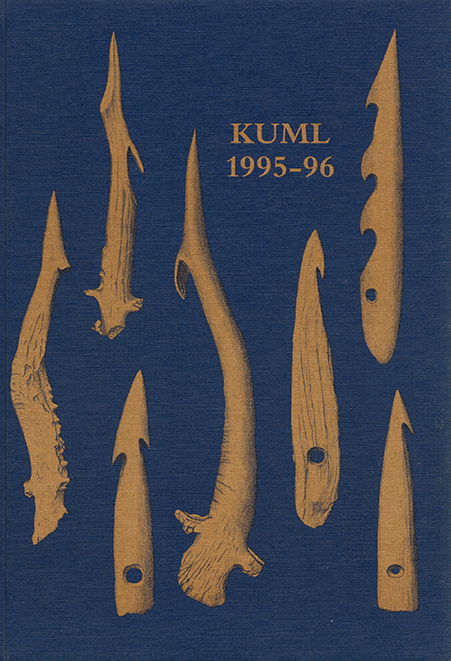The Vendel Dike
DOI:
https://doi.org/10.7146/kuml.v40i40.112338Keywords:
Vendel dikeAbstract
The Vendel Dike
In the dry summer of 1992 the Vendel Dike (Vendeldiget) was visible as a 2-3 m wide swathe 5-600 m long through the corn (fig. 1- 2).
At least five other dikes of the same kind have been examined in Jutland (Olgerdiget, Trældiget, Dandiget, Æ Vold, and Rammedige). The few datings obtained point to the Roman Iron Age. At the end of the 19th century Vendeldiget was known as a low E-W bank passing through Asp and Vejrum parishes midway between Struer and Holstebro. H.C. Strandgård was the first to call attention to the dike (fig. 3).
In 1992, 1993, and 1995 archaeologists from Holstebro Museum excavated the ditch (fig. 4). An area of 200 m2 was dug and 20 m of ditch uncovered (fig. 5). Seven sections were dug across the ditch. It had a width of 2-3.3 m and a depth of between 1.05 and 1.65 m (including 20 cm of topsoil). The sections showed it to be V-shaped in some places and U-shaped in others, and that it had silted up. No sign of a palisade and bank were found during the excavations (6) (fig. 6-7-8-9-10).
A small amount of charcoal from the basal layer was C-14 dated to 120-380 ±70 (7).
The Vendel Dike runs for more than 3.75 m and ends at marshy areas both in the east and west (fig. 11). The name means the winding, curved dike (8). It is interpreted as a territorial boundary between tribal confederations. Following a suggestion from Tacitus it can be suggested that it was the work of 4-5 villages, no doubt after orders from a chief or princeling (9). No village or farming settlement has ever been excavated in the immediate area, but a grave with equipment suggesting a military commander was excavated in 1901 four km to the north (10).
The part of western Jutland where Vendeldiget is situated recalls eastern Jutland in both its scenery and archaeology, as we are north of the maximum extent of the last glaciation.
There is now no trace of Vendeldiget on the surface, but Rammedige, 20 km further west, is partly under protection and worth seeing (11-12). As well as protecting a land area it controlled the course of a possible road, as is known elsewhere too (13).
Poul Mikkelsen og Lis Helles Olesen
Downloads
Published
How to Cite
Issue
Section
License
Fra og med årgang 2022 er artikler udgivet i Kuml med en licens fra Creative Commons (CC BY-NC-SA 4.0).
Alle tidligere årgange af tidsskriftet er ikke udgivet med en licens fra Creative Commons.


